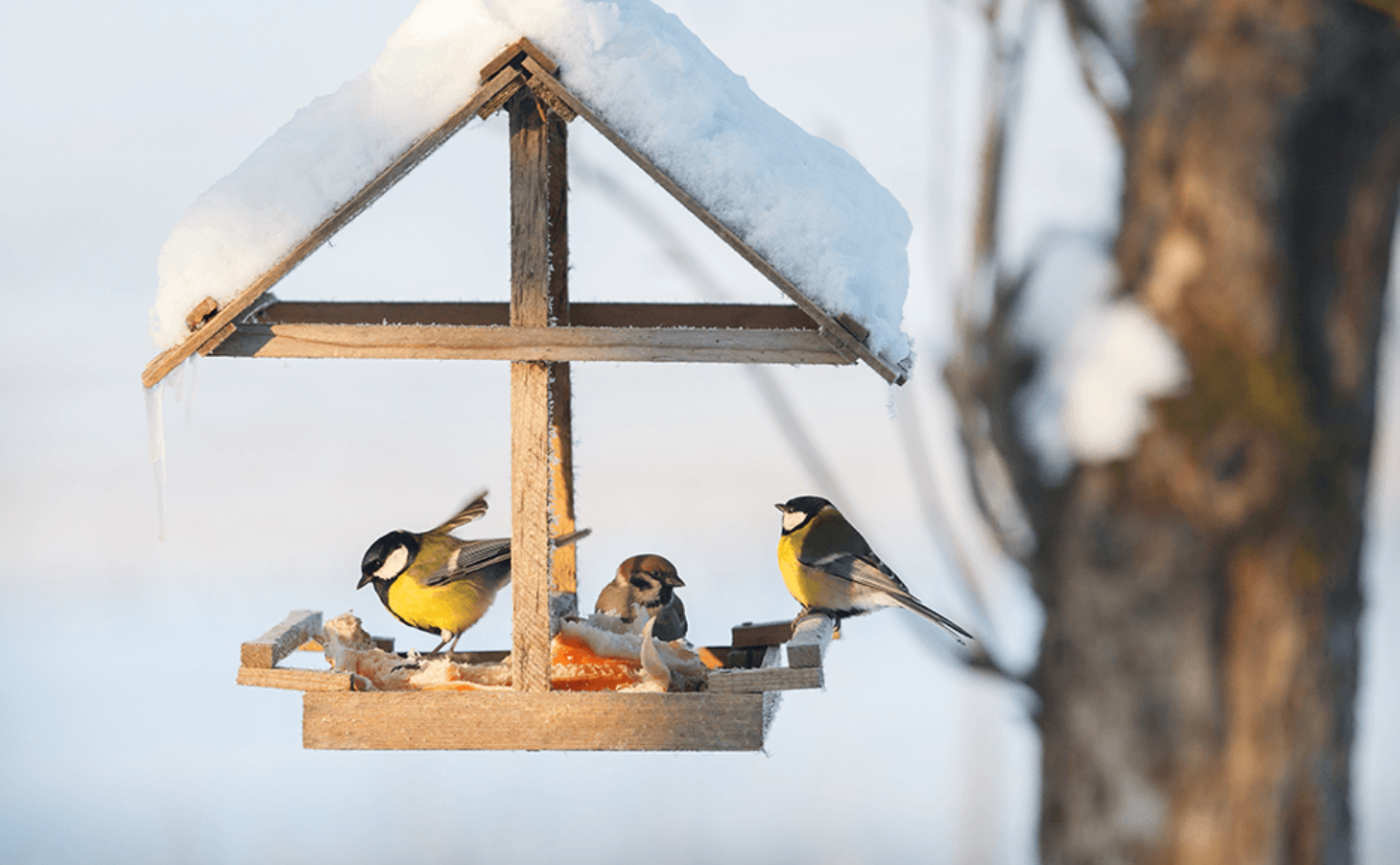Watching wild birds in your yard is an enjoyable activity any time of year, but this is especially true in winter when not much else is happening in your garden. Although some favorites, such as hummingbirds, migrate to warmer places in winter, many other species stick it out through the cold. There’s a few things you can do to attract wild birds when the weather turns cold. Use these tips to attract and feed wild birds in your yard all winter long. With minimal planning, your yard can become a prime spot for birds to fuel up and take refuge during these long, cold Michigan months

Leave Standing Plant Stems In Flower Beds
Perennial seeds are wildly popular with birds. Plant sizable groupings of flowers to ensure there will be enough seeds to go around. Many perennial flowers produce seeds that provide nutrients for birds long into the winter. Leaving these seed pods standing will bring birds to your garden, foraging through the remaining plants.
Coneflowers and Coreopsis are some examples of perennials known to be loved by birds in the winter.
Keep An Ice-Free Source of Water
Having a clean source of water is critical for birds and is something that often gets overlooked during the winter. Winter is when water is scarcest, and when birds need it the most.
Don’t put your birdbath away for the winter, or let it freeze over. Instead, invest in a portable warming device or de-icer for your birdbath to prevent freezing.

Offer Nourishing Foods
In winter, birds need more calories to stay warm and to travel around, so make sure to stock your feeders with foods that are rich in fats and oils. Supplement animals’ sparse winter diets with some simple offerings like pinecones smeared in nut butter, dried corn cobs, suet, and birdseed in a feeder or sprinkled on the ground.

Provide Shelter
Trees and shrubs, particularly evergreens, provide perches for birds to rest and shelter from rain, snow, wind, and predators. Alternatively, make a brush pile in an out-of-the-way spot in the yard with trimmed branches where birds can find shelter. Roosting boxes and birdhouses are another great way to provide safe places for birds to escape the elements.
Many plants can add beauty to your garden while also serving as a welcoming habitat for wild birds. Trees and shrubs that bear fruit into winter, such as hollies, viburnums, hawthorns, staghorn sumac, and wax myrtle, provide natural food sources for birds.
The key is to select a mix of plantings, shrubs and trees that offer birds the protection and food they need to survive.
Keep Feeders Protected
Locate your feeders in a spot that’s shielded from strong winds. Downwind of tall evergreen trees or in the shelter off a porch is ideal. It’s best to have some open space around feeders so birds can watch for danger, with perching spots nearby so they can easily cover from predators. Additionally, keep feeders covered to protect the food from rain and snow.

